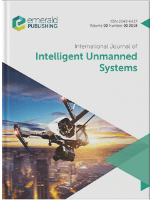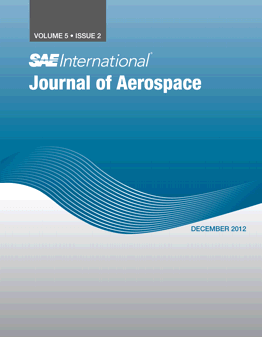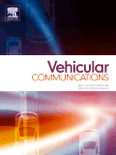
Drone Systems and Applications
Scope & Guideline
Charting New Territories in Drone Systems
Introduction
Aims and Scopes
- Advanced Air Mobility Operations:
Research that encompasses the development of frameworks and taxonomies to facilitate advanced air mobility, including urban air mobility and other innovative operational paradigms. - Autonomous Systems and Path Planning:
Studies that emphasize the use of autonomous drones for various applications, including multi-sensor data fusion, path planning, and cooperative swarm behaviors. - Environmental Monitoring and Management:
Applications of drones for environmental studies, such as monitoring wildlife, agricultural practices, and ecological assessments, showcasing the utility of drones in sustainability efforts. - Technological Innovations and Methodologies:
Exploration of new technologies and methodologies in drone systems, including sensor integration, data analysis techniques, and the development of new drone designs. - Interdisciplinary Applications:
A focus on the application of drones across disciplines such as archaeology, healthcare, and environmental science, highlighting the versatility of drone technology. - Safety, Regulation, and Ethical Considerations:
Research addressing the safety, certification, and ethical implications of drone operations, including regulatory frameworks and public perceptions.
Trending and Emerging
- AI and Machine Learning Integration:
The increasing incorporation of AI and machine learning for enhancing drone functionalities, such as path planning and data analysis, is a prominent trend that showcases the push towards intelligent systems. - Swarm Technology and Coordination:
Emerging research on UAV swarm technology emphasizes cooperative strategies and decentralized control, indicating a growing interest in multi-drone operations for complex tasks. - Biometric and Environmental Applications:
Innovative uses of drones for biometric recognition and environmental monitoring, such as gender recognition and wildlife tracking, reveal a trend towards specialized applications that address specific challenges. - Ethical and Societal Implications:
An increasing focus on the ethical considerations and societal impact of drone operations signifies a recognition of the need for responsible deployment and public engagement. - Advanced Sensor Technologies:
The development and application of advanced sensors, including thermal and multispectral imaging, highlight the journal's commitment to enhancing data collection capabilities in various fields.
Declining or Waning
- Traditional Survey Techniques:
The decreasing focus on conventional surveying methods in favor of innovative drone-based techniques suggests a shift towards more automated and efficient data collection methods. - Basic UAV Design and Mechanics:
As the field matures, there is less emphasis on basic UAV design principles, with more research directed towards advanced applications and integrations rather than foundational mechanics. - General UAV Applications:
Publications that broadly discuss UAV applications without specific technological or methodological advancements are becoming less frequent, indicating a move towards specialized and niche applications. - Human-Operated Flight:
As autonomous systems gain traction, research focusing on manual piloting and human-operated flight systems is declining, reflecting the industry's trend towards automation.
Similar Journals

International Journal of Intelligent Unmanned Systems
Transforming Ideas into Intelligent Unmanned TechnologiesInternational Journal of Intelligent Unmanned Systems, published by Emerald Group Publishing Ltd, is a leading platform for research focusing on the advancement of intelligent unmanned technologies. With an ISSN of 2049-6427 and an E-ISSN of 2049-6435, this journal addresses critical topics in Automotive Engineering, Economics, and Mechanical Engineering, reflecting its categorization within the Q3 and Q4 quartiles of 2023. It serves as a crucial resource for academics and professionals involved in developing intelligent unmanned systems, encompassing their application, design, and the economics surrounding these innovations. From its inception in 2013 and continuing through 2024, the journal has carved out an important niche within the research community by providing high-quality, peer-reviewed articles that contribute significantly to operational advancements and theoretical frameworks. This journal not only encourages open dialogue among researchers but also promotes interdisciplinary studies essential for the growth of intelligent systems in various sectors.

SAE International Journal of Aerospace
Exploring New Frontiers in Aerospace Research.The SAE International Journal of Aerospace, published by SAE International, serves as a critical platform for innovative research and advancements within the field of aerospace engineering. With an ISSN of 1946-3855 and an E-ISSN of 1946-3901, this esteemed journal contributes significantly to the body of knowledge in the aerospace sector, boasting a convergence span from 2008 to 2024. While currently categorized in Q4 of Aerospace Engineering, the journal is dedicated to fostering emerging ideas, technologies, and methodologies that could eventually elevate its standing. Although it does not offer open access options, the journal ensures wide dissemination of its well-curated articles to aid researchers, professionals, and students in staying abreast of the latest developments and trends. Given its distinct focus and commitment to the aerospace community, the SAE International Journal of Aerospace plays an essential role in bridging theory and practice, making it a valuable resource for those within this vital and evolving field.

Journal of the Korean Society for Aeronautical and Space Sciences
Connecting Researchers for a Thriving Aerospace CommunityThe Journal of the Korean Society for Aeronautical and Space Sciences is a dedicated platform for the dissemination of cutting-edge research in the fields of aerospace engineering and space sciences. Published by the esteemed Korean Society for Aeronautical & Space Sciences, this journal aims to bring together innovative findings and technological advancements from around the globe, thereby contributing to the ongoing development of the aerospace sector. Operating from South Korea, the journal holds an ISSN of 1225-1348 and an E-ISSN of 2287-6871, catering to both print and digital scholarly communication. Although categorized in Q4 within the Aerospace Engineering segment and ranked 139 out of 153 on Scopus, the journal plays a crucial role in fostering research collaboration and knowledge exchange among professionals, researchers, and students alike. With converged years from 2019 to 2024, it continuously seeks to enhance its contributions to the academic community through rigorous peer review and publication of original research. Given the evolution of aerospace technologies, this journal is vital for anyone involved in aeronautical research, ensuring that their work reaches the right audience.

Vehicular Communications
Connecting Ideas, Accelerating ProgressVehicular Communications is a leading academic journal dedicated to the field of automotive engineering, communication, and electrical and electronic engineering, published by Elsevier. With an impressive impact factor and classification in the Q1 quartile for 2023 across three critical categories, this journal ranks among the top scholarly platforms, especially in automotive engineering and communication disciplines. With a focus on the latest innovations and technologies pertaining to vehicular communication systems, it provides a vital forum for the dissemination of high-quality research, bridging theoretical knowledge and practical applications. Researchers, professionals, and students are encouraged to contribute to this dynamic publication, which not only highlights cutting-edge advancements but also promotes interdisciplinary collaboration in the rapidly evolving landscape of connected and autonomous vehicles. As the field continues to grow, Vehicular Communications aims to facilitate knowledge exchange and inspire future research directions through its comprehensive and accessible content.

AEROSPACE AMERICA
Elevating Discussions in Aerospace Technology and PolicyAerospace America, published by the American Institute of Aeronautics and Astronautics, stands as a crucial platform within the field of aerospace engineering. With over 30 years of dedication to advancing aerospace knowledge, the journal provides a comprehensive exploration of topics ranging from cutting-edge aerospace technology to aviation policy and industry developments. While it currently resides in the fourth quartile of the Scopus rankings for aerospace engineering, the journal aims to enhance its visibility and impact among researchers, professionals, and students. Access to its content is traditionally through institutional subscriptions, aligning with its mission to foster informed discussions and innovations in aerospace. As professionals and academics navigate the evolving landscape of aeronautics, Aerospace America remains a pivotal resource for those committed to the future of aerospace exploration and technology.

Journal of Unmanned Vehicle Systems
Pioneering advancements in control systems and aerospace engineering.Journal of Unmanned Vehicle Systems, published by CANADIAN SCIENCE PUBLISHING, is a leading peer-reviewed journal dedicated to advancing the field of unmanned vehicle technology. With an ISSN of 2291-3467, this journal provides an essential platform for researchers and professionals interested in the intersection of engineering, computer science, and control systems as they pertain to unmanned vehicles. The journal has achieved commendable rankings in Scopus, including a rank of #17/118 in Mathematics - Control and Optimization and #23/131 in Aerospace Engineering, reflecting its impact in these significant areas. As an open-access journal, it fosters global collaboration and accessibility, ensuring that innovative research in unmanned vehicle systems reaches a broad audience. The journal's objectives are to publish high-quality research articles, technical notes, and reviews that contribute to the understanding and development of autonomous systems. With its coverage spanning from 2013 to 2021, the Journal of Unmanned Vehicle Systems remains a vital resource for advancing discussions and knowledge in this rapidly evolving field.

Advances in Aircraft and Spacecraft Science
Innovating the Future of Aircraft and Spacecraft ScienceAdvances in Aircraft and Spacecraft Science is a distinguished journal published by TECHNO-PRESS, focusing on the rapidly evolving fields of aerospace engineering and fluid dynamics. With an ISSN of 2287-528X and an E-ISSN of 2287-5271, this journal is an invaluable resource for researchers, professionals, and students dedicated to advancing knowledge in aircraft and spacecraft technologies. Established in 2014, the journal is committed to disseminating high-quality research findings and innovative methodologies, ensuring that cutting-edge studies can be accessed globally. Despite its current position in the Q4 category for both aerospace engineering and fluid flow transfer processes, it continues to carve a niche in the academic landscape, with Scopus rankings highlighting its contribution to these fields. Operating from South Korea, Advances in Aircraft and Spacecraft Science aims to inspire collaboration and knowledge-sharing among scholars, fostering advancements that drive the aerospace industry forward.

Science Robotics
Advancing Knowledge at the Intersection of AI and RoboticsScience Robotics, published by the American Association for the Advancement of Science, is a leading journal that explores cutting-edge advancements in the field of robotics, emphasizing the intersection of artificial intelligence, mechanical engineering, and control optimization. With its ISSN 2470-9476, this prestigious journal holds an impressive Q1 ranking across pivotal categories for 2023, including Artificial Intelligence, Computer Science Applications, Control and Optimization, and Mechanical Engineering. It has garnered renowned recognition in the academic community, highlighted by its high Scopus rankings—placing it in the top tier with a 99th percentile rank in Mathematics for Control and Optimization and Computer Science Applications, and maintaining a 98th percentile in Artificial Intelligence. While the journal is not currently open access, it serves as a vital repository of knowledge for researchers, professionals, and students seeking to stay at the forefront of robotic innovations. Operating from its base in Washington, DC, Science Robotics aims to disseminate world-class research that catalyzes future developments in robotics and automation technologies, making it an essential resource for those engaged in the scientific study and application of these transformative fields.

Drones, published by MDPI in Switzerland, is a leading open-access journal dedicated to advancing research in the dynamic field of drone technology and applications. Since its inception in 2017, this journal has quickly established itself as a vital source of scholarly content, boasting a Q1 ranking in Aerospace Engineering and strong placements in Artificial Intelligence, Computer Science Applications, Control and Systems Engineering, and Information Systems. The journal aims to foster discourse and innovation around drone usage across various sectors, including environmental monitoring, logistics, and advanced manufacturing. With an impressive Scopus ranking, including a top 30 position in Aerospace Engineering, Drones continues to draw contributions from a diverse array of researchers, professionals, and students, thereby enriching the academic dialogue surrounding this transformative technology. As an open-access journal, it ensures that research is widely accessible, promoting transparency and collaboration within the international research community.

International Journal of Aeronautical and Space Sciences
Pioneering Insights in Aerospace EngineeringThe International Journal of Aeronautical and Space Sciences, published by Springer, is a prominent platform dedicated to advancing research and innovation in the fields of Aerospace Engineering, Control and Systems Engineering, Electrical and Electronic Engineering, and Materials Science. With an ISSN of 2093-274X and an E-ISSN of 2093-2480, the journal has established itself as a vital resource since its inception in 2011, currently offering insights that span a wide range of contemporary challenges and technological advancements in aeronautics and space exploration. Ranking in the Q2 category across multiple disciplines, including Aerospace and Control Engineering, signifies its recognized impact and quality within the academic community. Although not an open-access journal, it remains accessible to researchers, professionals, and students seeking to enhance their understanding of complex aerospace systems and their applications. The journal’s commitment to publishing high-quality research makes it indispensable for those aiming to contribute to, or stay informed about, the evolving landscape of aerospace technology.